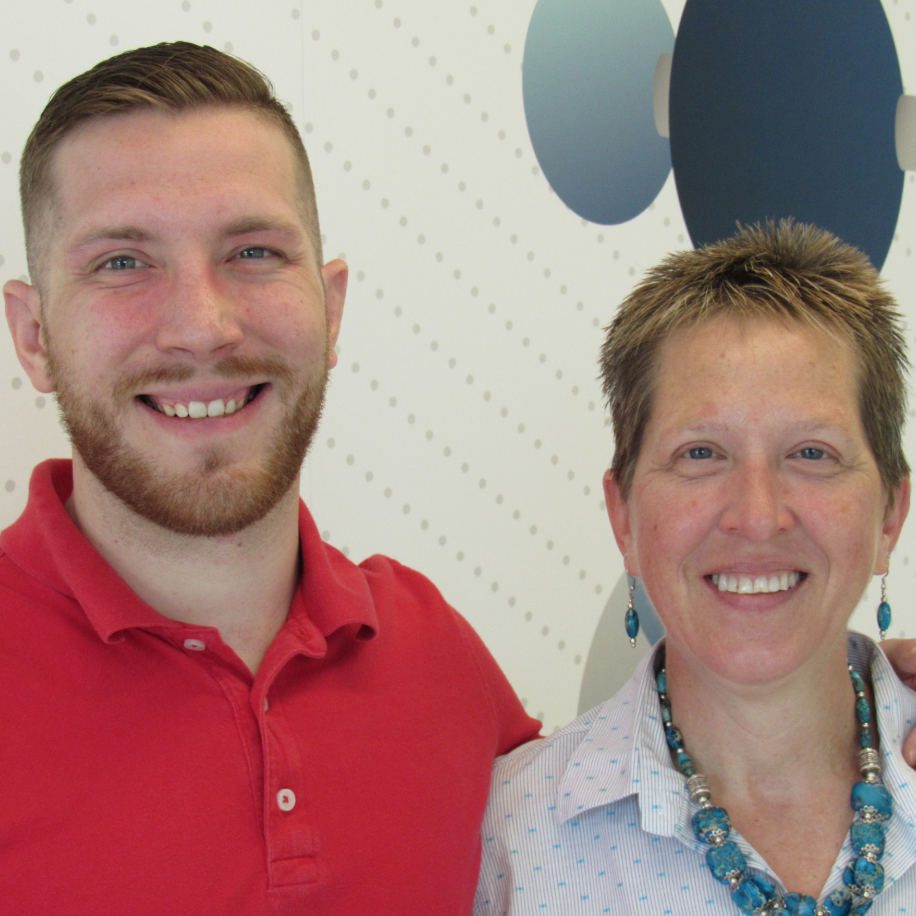A Mother and Son Learn from Each Other
When Gina Frey's son, Walter Buhro, emerged from graduate school with an M.A. in experimental physics and a desire to teach, she wasn't necessarily surprised.
What surprised Frey, who is a professor of general chemistry at Washington University and a veteran POGIL facilitator, is that her son — who loved listening to lectures and working on his own — embraced active learning pedagogy: his polar opposite learning preference as a student.
"When he was growing up, he really loved to learn from lecture!" Frey laughs. But Buhro soon found that lecture didn't cut it in his physics classrooms, she says. His students simply didn't learn as well.
"He tried some groupwork as a student teacher," Frey recalls, "but once he went to the POGIL regional workshop, he was hooked. All of a sudden, you're in this community of teachers who want to talk about teaching and learning, or who are willing to help you."
When asked, Buhro is slightly more pragmatic about his approach to POGIL. Active learning? That just comes down to the students, says Buhro, who is in his second year teaching physics at West Morris Regional High School in Chester, New Jersey.
"Students are not used to sitting quietly and taking notes," Buhro explains. "That's already out. The kids will accept active learning, and they'll do whatever you hold them accountable to do."
Since Buhro is still relatively new to the profession, he says, finding enough POGIL activities in his discipline has been a challenge. "The biggest barriers to using a new philosophy or pedagogy are specific resources that I can use in a classroom," says Buhro, who also earned an M.A. in education. "Developing those is very time-consuming."
Still, he's convinced that process-oriented learning is the key to making a lasting impression on physics students, and he's started implementing POGIL concepts in his lab activities.
Buhro says that he still faces occasional challenges in trying to steer students away from solving problems simply in order to get the right answers. "Because of the way we assess things, they get a perfectionist mentality, and that mentality is not good for POGIL," says Buhro. "Students are very goal-oriented, but they're not process-oriented."
"I really like to see that students are constructing their own knowledge," Buhro continues. "Students have to interpret data and build concepts from that. I can tell that that's very important."
Buhro's observations have led to generative mother-son discussions about assessing process skills, and POGIL has become a way for them to connect with one another as educators. "We bonded a lot, talking about different methods, how to meet students where they're at, and how to get them to show you how they're learning," says Buhro.
"It really is a conversation, it really is like he's learning from me, and I'm learning from him," confirms Frey.
"We've started to talk about how students solve problems, and the processes you can use to help students solve problems," Frey adds. "They're not high school students, but our students here sometimes have problems in walking through the steps. He has a stepwise strategy that has really had me thinking about what type of structure I put into my problems."
When Frey first adopted POGIL in her general chemistry classroom at Washington University, it was because she felt students needed more support in learning how to work in groups. Now, the chemistry department uses two methods: peer-led team learning and POGIL.
"What it allowed us to do is teach our students how you really work in groups, how you solve a problem collaboratively," says Frey. "How you discuss the concepts and how you talk through the process and start not to worry so much about the answer, but why I'm solving the problem the way I am."
As a POGIL veteran, Frey has always been drawn to the way the community pushes facilitators to grow in their teaching, too.
"I know that I have colleagues all around and that we will work on projects together, and I'll meet them throughout the year," says Frey of her connection to the POGIL community. "It helps you grow in your understandings of the methodologies of how students learn and how we can improve our teaching."
"It makes you remember that people are interested in this type of research," she continues. "That what we're doing is important. It's not intuitive, and you can improve."

A Mother and Son Learn from Each Other
“All of a sudden, you're in this community of teachers who want to talk about teaching and learning, or who are willing to help you." -Gina Frey, professor of chemistry at Washington University